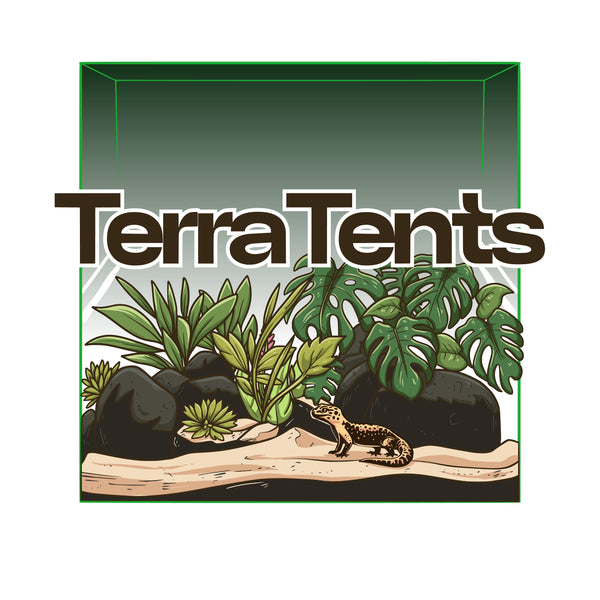*Designed for Their World: The Importance of Species-Specific Enclosures*:
Share
### **Designed for Their World: The Importance of Species-Specific Enclosures**
Reptiles are a diverse group of animals, ranging from desert-dwelling lizards to tree-climbing snakes. Each species has unique environmental needs that reflect their natural habitats. Yet, many pet owners make the mistake of using a generic enclosure for all reptiles, leading to stress, health issues, and an inability for the animal to exhibit natural behaviors.
Species-specific enclosures are designed to meet the unique requirements of individual reptiles, ensuring they thrive in captivity. In this blog, we’ll discuss the importance of species-specific designs, provide examples of tailored enclosures, and explain how these designs contribute to a happier and healthier pet.
---
#### **Why One-Size-Fits-All Doesn’t Work**
Reptiles evolved to live in diverse environments, from arid deserts to humid rainforests. These habitats shape their behavior, diet, and even their physiology. When reptiles are placed in enclosures that don’t mimic their natural environment, they often experience stress, which can lead to health issues.
For example, a chameleon kept in a small, poorly ventilated tank will suffer because it lacks the vertical space it needs to climb and sufficient airflow to maintain proper humidity levels. Similarly, a burrowing species like a leopard gecko won’t thrive in an enclosure without a substrate deep enough for digging.
Generic enclosures often fail to provide the right temperature gradients, humidity levels, or structural features (like climbing branches or hides), all of which are critical for the reptile’s well-being.
---
#### **Examples of Species-Specific Designs**
1. **Arboreal Enclosures for Tree-Dwellers**
Species like green tree pythons, crested geckos, and chameleons thrive in enclosures with ample vertical space. These setups typically include branches, vines, and elevated platforms to encourage climbing. Proper ventilation and misting systems are also crucial to replicate the humid environments these species are accustomed to.
2. **Horizontal Enclosures for Ground-Dwellers**
Tortoises, bearded dragons, and leopard geckos require enclosures with more horizontal space than height. These designs prioritize ground area for basking, burrowing, and exploring. A shallow substrate for burrowing species and basking zones with UVB lighting are essential features.
3. **Stackable Breeder Setups**
For breeders or owners of multiple reptiles, stackable enclosures offer a practical way to house several animals in a space-efficient manner. These setups allow for individual control of temperature and humidity in each enclosure, catering to the specific needs of different species.
4. **Moist, Enclosed Chambers for Hatchlings**
Hatchlings, such as young tortoises, often require higher humidity to prevent conditions like pyramiding. Closed-chamber enclosures with controlled heat and humidity are ideal for their delicate early stages.
---
#### **How Species-Specific Enclosures Benefit Reptiles**
1. **Encourage Natural Behaviors**
When enclosures are designed to mimic an animal’s natural habitat, they encourage species-specific behaviors like climbing, burrowing, or basking. This reduces stress and allows the reptile to lead a more fulfilling life.
2. **Promote Physical and Mental Health**
Proper temperature gradients, humidity levels, and structural features reduce the risk of health problems like respiratory infections, dehydration, and metabolic bone disease. Additionally, engaging environments prevent boredom and stress.
3. **Support Longevity**
Reptiles kept in enclosures that meet their specific needs tend to live longer, healthier lives. By mimicking natural conditions, these enclosures reduce the likelihood of chronic health issues.
---
#### **Tips for Choosing or Creating a Species-Specific Enclosure**
- **Research Your Pet’s Natural Habitat:** Before purchasing an enclosure, research the species’ native environment. Learn about their temperature, humidity, lighting, and spatial needs.
- **Look for Customization Options:** Some enclosures allow you to adjust features like ventilation, substrate depth, or interior accessories, making them adaptable for specific species.
- **Add Enrichment Items:** Include elements like climbing structures, hides, or water features that align with the reptile’s natural behaviors.
- **Monitor and Adjust Regularly:** Even with a species-specific setup, conditions may need regular tweaking. Use tools like thermometers, hygrometers, and timers to maintain optimal conditions.
---
#### **The Psychological Benefits of Proper Enclosures**
Reptiles may not show emotions the way mammals do, but stress and discomfort are evident in their behavior. For instance, a stressed reptile might hide excessively, refuse to eat, or display erratic movements. Species-specific enclosures reduce these stressors, providing a sense of security and allowing reptiles to settle into their environment.
For example, a chameleon in an arboreal enclosure with plenty of foliage and climbing space will feel more secure and exhibit healthier behaviors, like foraging and basking. Similarly, a ground-dwelling tortoise will thrive in a spacious enclosure with proper hiding spots and a warm basking area.
---
#### **Conclusion**
Reptiles aren’t one-size-fits-all pets, and their enclosures shouldn’t be either. Species-specific designs cater to the unique needs of different reptiles, promoting their health, happiness, and longevity. By investing in the right enclosure, you’re not just providing a habitat—you’re creating a space where your reptile can thrive.
Whether you’re housing a tree-climbing gecko, a burrowing tortoise, or a basking dragon, take the time to research and tailor their environment. A well-designed, species-specific enclosure is one of the most rewarding investments you can make as a reptile owner.
---
Let me know if you’re ready for the fourth blog post!
